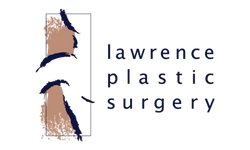Fat Grafting (Face)
Fat Grafting (Face) Overview
Fat grafting (also called fat transfer or lipoinjection) involves removing fat from an area where you have excess (abdomen, trunk, thighs, etc.) with gentle liposuction techniques, preparing it in a centrifuge, and injecting it in areas where you may need additional fullness. Your own living fat cells make an excellent, long-lasting filler material. This is an exciting new frontier in plastic surgery, as there is ongoing research into the beneficial results of the stem cells contained within the transferred adipose tissue.
In addition to using fat in the body and breasts, we are currently using it in the face to restore fullness to the lips, cheeks, and other areas where volume loss occurs as a natural consequence of aging. It can be used alone or in conjunction with other procedures such as facelifts.
How It Works
Fat grafting is not really a new procedure, as it has been done in various ways for decades. However, in more recent years we have gained a greater understanding on how to harvest, process, and reinject the fat to make this a safer procedure with better results. The role that stem cells contained in the fat may play in this process is an area of intense research right now, with new information and applications for patients emerging all the time. There is interest in complete breast reconstruction using only the patient’s fat, although this has only been done in a limited number of patients in the U.S. and elsewhere.
At Lawrence Plastic Surgery we have been doing fat grafting for over 15 years and are excited to see how this technology and its applications are evolving. We continue to explore and refine our techniques to give us another important tool for our patients.
Benefits
Although more time consuming than simply opening a syringe of a filler material and injecting, fat does have some real advantages. It’s long-lasting yet we have not seen the problems of excess nodularity or firmness noted with some of the extremely long-lasting or permanent fillers. Once we have made our incision, there is an ample supply of fat we can harvest so you don’t have to charge by the syringe, which can be very expensive with some fillers, especially if large volumes are required. Fat remains soft and pliable, which is especially important when using it in mobile areas of the face, such as in the lips and around the mouth.
The Procedure
Fat grafting can be done under local anesthesia in the office or in the operating room, depending on the area and the extent of fat grafting required. We typically remove fat from the abdomen, although other donor areas can be utilized. The area for fat removal is infiltrated with a very dilute local anesthetic solution, then the fat is harvested using small cannulas and a syringe through a tiny incision, often placed at the umbilicus (belly button) where it can be well hidden. The fat is then prepared for reinjection and injected into the areas of the face requiring more fullness. The process usually takes 1-2 hours and is done on an outpatient basis.
Recovery
The main side effects are local bruising and swelling at both the donor area and injection sites along with minor to moderate pain for a few days. Patients are usually able to return to normal activities after a few days, although we usually advise waiting a week before resuming strenuous exercise. There is always some degree of fat reabsorption (not all the fat cells survive) and sometimes more than one treatment is necessary to achieve adequate fullness or correction of the defect. The results are long-lasting.
Financing & Payment Options
For information regarding insurance and payment options, please visit our Financing page. We can give you price information prior to the procedure so you can understand your financial obligations.
Patient Forms
Please fill out paperwork at least 24 hours before your scheduled appointment.
